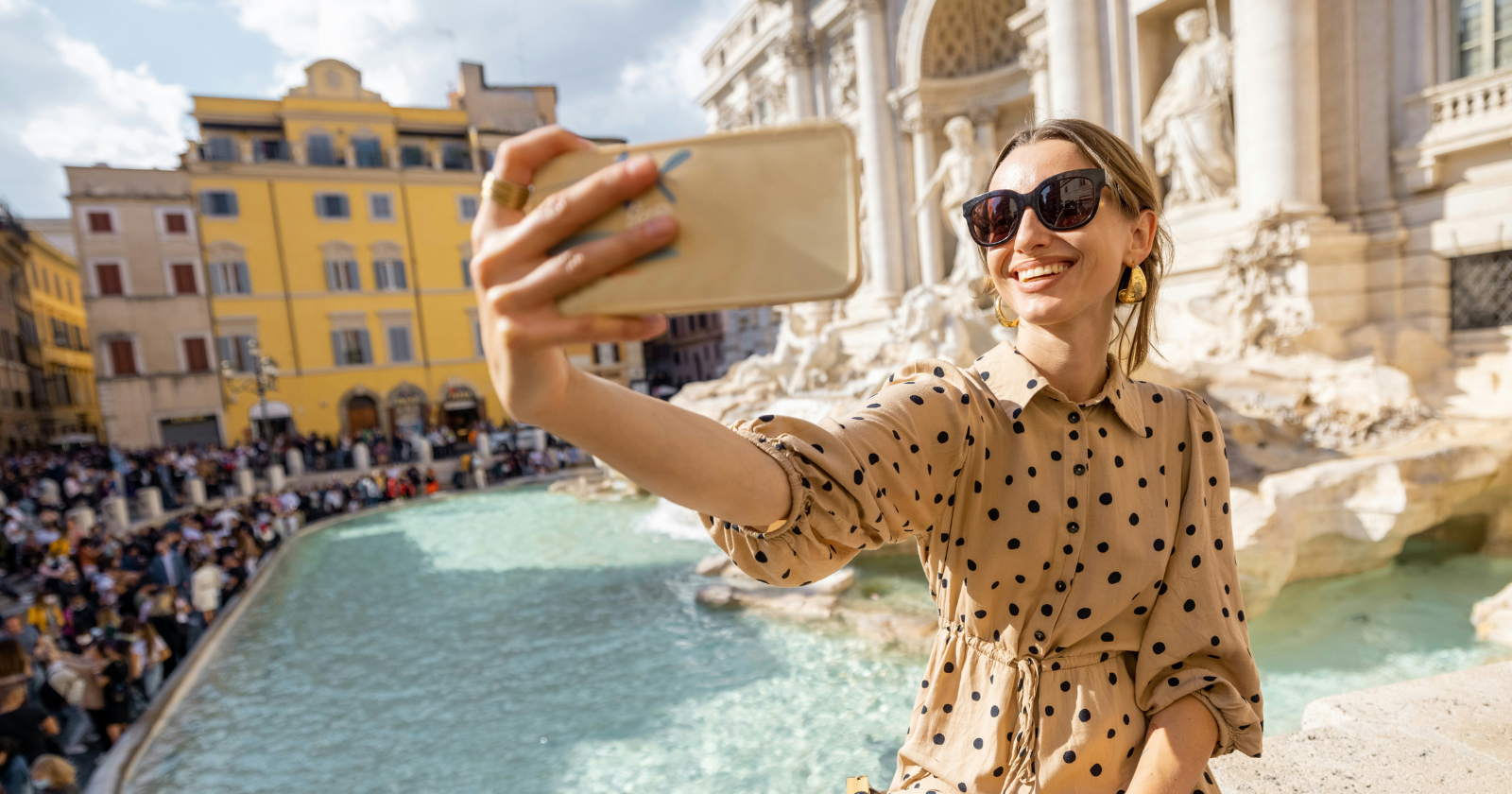Last year, I watched a friend spend three months’ salary on a trip to what she called “the most exclusive destination in Europe.”
When she returned, I scrolled through her photos and couldn’t help but notice something: the crowds of tourists in matching resort wristbands, the buffet lines, the generic hotel room that could’ve been anywhere. She’d paid luxury prices for what was essentially a very expensive version of any standard vacation.
It got me thinking about how brilliant the tourism industry has become at repackaging ordinary experiences with aspirational branding and premium price tags. We’re told certain destinations are “exclusive” or “luxurious,” but when you actually show up, you realize you’re just one of thousands having the exact same curated experience.
After years of analyzing financial decisions and now writing about the psychology behind our choices, I’ve noticed how easily we confuse expensive with exclusive. So let’s pull back the curtain on seven destinations that have mastered the art of selling middle-class tourism as luxury.
1. Santorini, Greece
The Instagram aesthetic is undeniable. Those blue-domed churches, the white buildings cascading down cliffsides, the spectacular sunsets. Santorini has become shorthand for “aspirational travel.”
But here’s what the photos don’t show: you’re watching that famous sunset with literally hundreds of other people, all jostling for the same photo angle. The narrow streets of Oia are so packed during peak season that you’re essentially shuffling along in a human traffic jam. Those iconic infinity pools? They’re often the size of a large bathtub, shared by an entire hotel, and you’ll need to wake up at dawn to get a photo without other guests in the frame.
The restaurants with caldera views charge premium prices for mediocre food because they know tourists will pay for the setting. You’re spending luxury money for what amounts to a very crowded, albeit beautiful, tourist experience that thousands of other people are having simultaneously.
I’m not saying it’s not beautiful. It absolutely is. But calling it an exclusive luxury destination when you’re literally standing shoulder-to-shoulder with tour groups stretches the definition of luxury pretty thin.
2. Dubai, UAE
Dubai positions itself as the pinnacle of luxury, and sure, there’s gold leaf on everything and the buildings are impressively tall. But scratch beneath that glittering surface and you’ll find it’s essentially a massive shopping mall with weather you can’t comfortably exist in for half the year.
The experiences Dubai sells as luxury are actually just expensive versions of things you can do anywhere.
Brunch at a hotel? That’s just brunch with a higher price tag.
Desert safari? Every tourist does the exact same circuit with the exact same activities.
Even staying at the famous Burj Al Arab, while certainly expensive, offers an experience that’s more about bragging rights than actual exclusivity.
What strikes me most about Dubai is how manufactured the whole thing feels. It’s luxury as performance, where the point is to be seen consuming luxury rather than actually experiencing something rare or meaningful. You’re paying premium prices to participate in mass tourism that’s been wrapped in gold foil.
3. Bali, Indonesia
Bali has somehow convinced millions of people that they’re having a unique, spiritual experience while doing exactly what every other tourist is doing. The island markets itself as an exotic paradise, but certain areas have become so overrun with tourists that you’re more likely to hear Australian accents than Indonesian.
Those gorgeous rice terraces in your feed? You’ll be sharing them with dozens of other people trying to get the exact same shot. The beach clubs in Canggu and Seminyak are packed with digital nomads and influencers, all there for the “vibe” but creating an atmosphere that’s more Brooklyn than Bali.
The wellness retreats and yoga studios charge Western prices while offering experiences you could find in any major city. You’re paying for the location and the aesthetic, not for anything genuinely rare or transformative.
I find it interesting how Bali sells authenticity while simultaneously being one of the most commercialized destinations in Southeast Asia. The traditional ceremonies have become photo opportunities, the local culture a backdrop for tourist consumption.
4. Tulum, Mexico
Tulum might be the champion of selling middle-class tourism as luxury. It’s positioned itself as an exclusive, eco-conscious destination for the culturally sophisticated, but the reality is quite different.
Those “eco-resorts” are often just rustic accommodations at five-star prices, with unreliable electricity and limited amenities being rebranded as “getting back to nature.” The beach clubs charge Manhattan prices for cocktails while you sit in the same sand available on less expensive beaches just down the coast.
The town has become so overrun with tourism that traffic congestion is a serious problem, the beaches are crowded, and the environmental impact of rapid development contradicts the eco-conscious branding. You’re essentially paying luxury prices to participate in mass tourism that’s destroying the very environment you came to experience.
What frustrates me most is how Tulum has perfected the art of the upcharge. Everything costs more than it should because the destination has successfully branded itself as exclusive, even though you’re surrounded by thousands of other tourists having the identical experience.
5. Mykonos, Greece
Mykonos sells itself as the playground of the rich and famous, but unless you’re actually chartering yachts and staying in private villas, you’re just participating in expensive mass tourism with a party atmosphere.
The famous beach clubs charge cover fees just to enter, then add astronomical prices for sun loungers and drinks. You’re paying for the privilege of being packed onto a beach with hundreds of other people, all there because they saw the same Instagram posts you did.
The old town is charming, sure, but you’ll be navigating through crowds of cruise ship passengers and tour groups during the day.
Those iconic windmills? Surrounded by tourists taking turns getting photos.
The Little Venice sunset? Same situation as Santorini, just with more aggressive restaurant hosts trying to get you to book a table.
I remember reading that the island receives over a million tourists per year on an island with a permanent population of about ten thousand. That’s not exclusive, that’s industrial tourism with a luxury price tag.
6. The Maldives resorts
This one might be controversial, but hear me out. Yes, the Maldives is beautiful. Yes, the water is that blue. But many of the resorts that market themselves as ultimate luxury are essentially fancy all-inclusive resorts on tiny islands where you’re geographically trapped.
You’re paying thousands per night for an overwater bungalow that’s one of dozens, sometimes hundreds, of identical rooms on a resort island. The experience is carefully manufactured and controlled. You eat at the same restaurants, do the same excursions, see the same limited area of reef as every other guest.
The isolation that’s sold as exclusivity is really just constraint. You can’t explore, you can’t discover anything unexpected, you can’t interact with local culture in any meaningful way because you’re on a resort island designed for tourists.
What you’re really paying for is convenience and predictability with nice aesthetics. That’s not inherently bad, but it’s not really luxury travel in any meaningful sense. It’s a beautiful prison with room service.
7. Paris tourist attractions
Paris itself is genuinely wonderful, but the way most tourists experience it is pure middle-class tourism dressed up with the city’s inherent elegance. The Eiffel Tower, the Louvre, the Champs-Élysées during high season become exercises in crowd management, not cultural experiences.
You’ll wait in line for hours, be herded through attractions in massive groups, eat overpriced mediocre food in tourist-trap restaurants, and stay in hotels that charge premium rates simply for being in Paris, regardless of actual quality.
The “luxury” Paris vacation most people take involves hitting the same highlights as millions of others, shopping at internationally available luxury brands, and eating in restaurants that cater to tourists rather than locals. You’re participating in a well-worn circuit that feels special because you’re in Paris, not because the experience itself is particularly exclusive or unique.
During my years as a financial analyst, I watched people rationalize enormous expenses because the destination had luxury branding, even when the actual experience they purchased was fundamentally ordinary.
Paris exemplifies this perfectly because the city’s reputation does so much heavy lifting that tourists don’t question whether they’re actually having a special experience.
Final thoughts
Look, I’m not saying these destinations aren’t worth visiting or that you won’t have a good time. Beautiful places are still beautiful, even when they’re crowded. What I am saying is that we should be honest about what we’re actually purchasing.
The tourism industry has become incredibly sophisticated at selling ordinary experiences at luxury prices by leveraging aspirational branding, social media aesthetics, and our own desire to feel like we’re doing something special.
But exclusive and expensive aren’t the same thing. Luxury and popular are often contradictory.
Before dropping thousands on a destination because it’s supposed to be luxurious, ask yourself what you’re actually getting. Are you paying for a genuinely rare experience, or are you paying premium prices to do what everyone else is doing, just with better lighting and more Instagram-worthy backdrops?
True luxury in travel, I’ve come to believe, isn’t about destinations with the right branding. It’s about experiences that feel personal, uncrowded, and authentic. Sometimes that’s expensive, sometimes it’s not. But it’s rarely found in places that have mastered the art of mass tourism with aspirational marketing.
If You Were a Healing Herb, Which Would You Be?
Each herb holds a unique kind of magic — soothing, awakening, grounding, or clarifying.
This 9-question quiz reveals the healing plant that mirrors your energy right now and what it says about your natural rhythm.
✨ Instant results. Deeply insightful.

